Kittlitz's Plover
Posted: Sun Dec 30, 2012 9:59 am
248. Kittlitz's Plover Charadrius pecuarius (Geelborsstrandkiewiet)
Order: Charadriiformes. Family: Charadriidae
Description
Size 14-15 cm. In flight, the primary flight feathers are dark with a short white wing bar. There is a dark eye patch at all times. It has rather long legs (toes projecting well beyond tail in flight).
In breeding plumage it has a grey-brown back, crown, and wings, an orange breast shading to white on the lower belly. The breast is variably creamy buff to chestnut, and there is a dark shoulder patch. It has long dark grey legs. The forehead and throat are white, with black lores and a black frontal bar, the latter extending as a stripe down the sides of the neck and around the hind neck.
Non-breeding adults lose the distinctive face pattern. The head is less well marked in non-breeding plumage, with the pale buffy ring around the crown extending to the nape.
The juvenile lacks the black mask and forecrown and the yellow breast; it may be distinguished from juvenile White-fronted Plover by the broad, buffy eye-brow stripe extending onto the buffy (not white) nape.
Distribution
Occurs in Madagascar and sub-Saharan Africa, from Senegal to Ethiopia south to southern Africa. Within southern Africa it is locally common across much of the region, largely excluding south-central Botswana and the outer areas of Namibia. Common in Namibia in Etosha National Park, Swakopmund and Walvis Bay, central Namibia.
Habitat: Found throughout in dried muddy or short grassy areas near water, also on mudflats in estuaries and coastal lagoons.
Movements and migrations
It can be sedentary, nomadic or migratory depending on environmental conditions, as for example in particularly dry years it often moves from arid regions to areas with more rainfall, vice versa in high rainfall years. It is mainly sedentary when breeding, while it is often nomadic in the non-breeding season. Coastal populations appear to be fairly sedentary.
Diet
It mainly eats small invertebrates, especially beetles, foraging by day and night using the typical run-stop-search technique of plover. While foraging it is aggressive towards other Kittlitz's plovers as well as other species with a similar diet, such as Common ringed plover and Curlew sandpiper.
Breeding: Monogamous, territorial and usually a solitary nester, occasionally breeding in loose groups. The nest is a simple scrape in bare ground, either bare or lined with pebbles, fragments of vegetation, mud, grass, shell pieces and animal dung. It is typically placed in coarse sand or dry mud, sometimes raised on a mound. Egg-laying season is year-round, peaking from October-January in the Western Cape, June-November elsewhere in South Africa and from July-October in Botswana and Zimbabwe. It lays 1-3 eggs, which are incubated by both sexes for about 22-28 days, with the female taking the day shift while the male incubates at night. The chicks leave the nest within 24 hours of hatching, and are brooded for about a third of daytime, a practice which ceases once after about six weeks, although they fledge at about 25-32 days old.
Call
A short, clipped trill kittip.
Status
Common resident and local nomad.
Order: Charadriiformes. Family: Charadriidae
Description
Size 14-15 cm. In flight, the primary flight feathers are dark with a short white wing bar. There is a dark eye patch at all times. It has rather long legs (toes projecting well beyond tail in flight).
In breeding plumage it has a grey-brown back, crown, and wings, an orange breast shading to white on the lower belly. The breast is variably creamy buff to chestnut, and there is a dark shoulder patch. It has long dark grey legs. The forehead and throat are white, with black lores and a black frontal bar, the latter extending as a stripe down the sides of the neck and around the hind neck.
Non-breeding adults lose the distinctive face pattern. The head is less well marked in non-breeding plumage, with the pale buffy ring around the crown extending to the nape.
The juvenile lacks the black mask and forecrown and the yellow breast; it may be distinguished from juvenile White-fronted Plover by the broad, buffy eye-brow stripe extending onto the buffy (not white) nape.
Distribution
Occurs in Madagascar and sub-Saharan Africa, from Senegal to Ethiopia south to southern Africa. Within southern Africa it is locally common across much of the region, largely excluding south-central Botswana and the outer areas of Namibia. Common in Namibia in Etosha National Park, Swakopmund and Walvis Bay, central Namibia.
Habitat: Found throughout in dried muddy or short grassy areas near water, also on mudflats in estuaries and coastal lagoons.
Movements and migrations
It can be sedentary, nomadic or migratory depending on environmental conditions, as for example in particularly dry years it often moves from arid regions to areas with more rainfall, vice versa in high rainfall years. It is mainly sedentary when breeding, while it is often nomadic in the non-breeding season. Coastal populations appear to be fairly sedentary.
Diet
It mainly eats small invertebrates, especially beetles, foraging by day and night using the typical run-stop-search technique of plover. While foraging it is aggressive towards other Kittlitz's plovers as well as other species with a similar diet, such as Common ringed plover and Curlew sandpiper.
Breeding: Monogamous, territorial and usually a solitary nester, occasionally breeding in loose groups. The nest is a simple scrape in bare ground, either bare or lined with pebbles, fragments of vegetation, mud, grass, shell pieces and animal dung. It is typically placed in coarse sand or dry mud, sometimes raised on a mound. Egg-laying season is year-round, peaking from October-January in the Western Cape, June-November elsewhere in South Africa and from July-October in Botswana and Zimbabwe. It lays 1-3 eggs, which are incubated by both sexes for about 22-28 days, with the female taking the day shift while the male incubates at night. The chicks leave the nest within 24 hours of hatching, and are brooded for about a third of daytime, a practice which ceases once after about six weeks, although they fledge at about 25-32 days old.
Call
A short, clipped trill kittip.
Status
Common resident and local nomad.
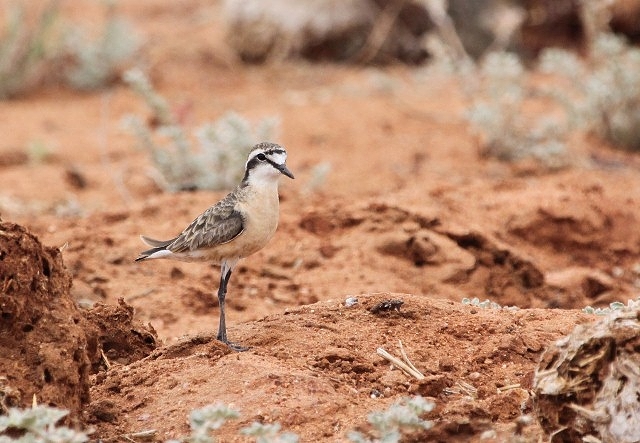
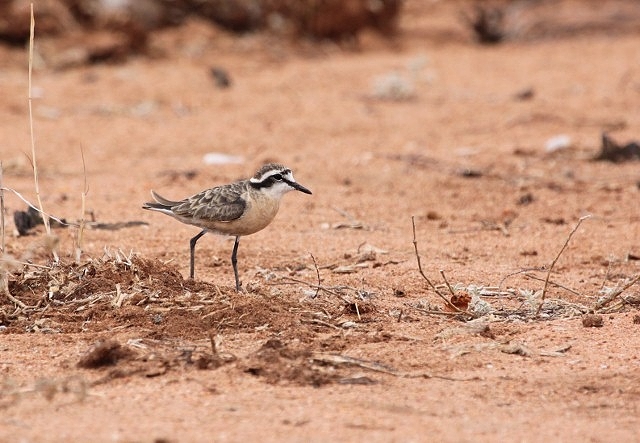 © nan
© nan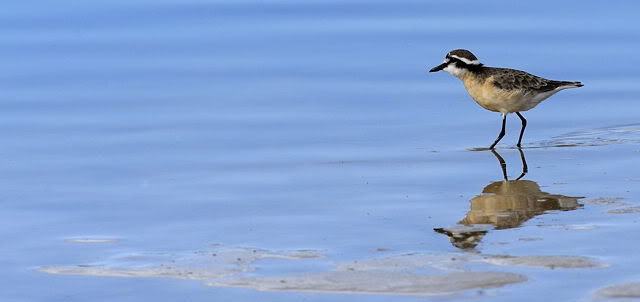 © Dewi
© Dewi © Heksie
© Heksie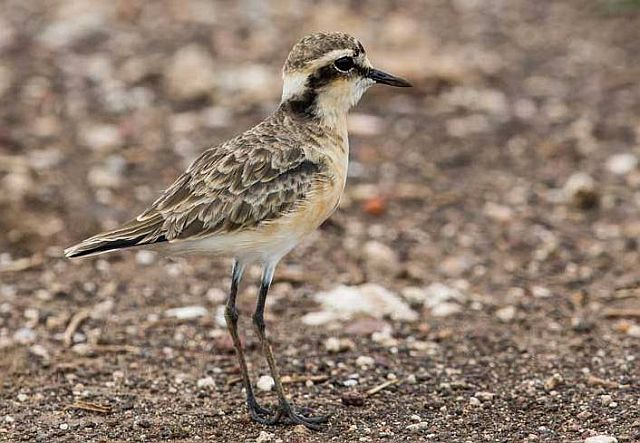 © Pumbaa
© Pumbaa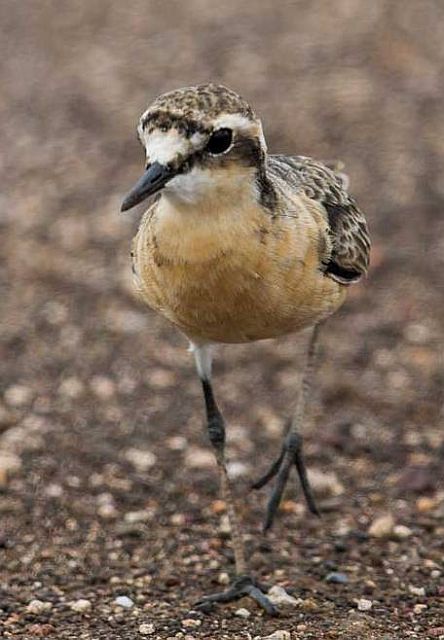 © Pumbaa
© Pumbaa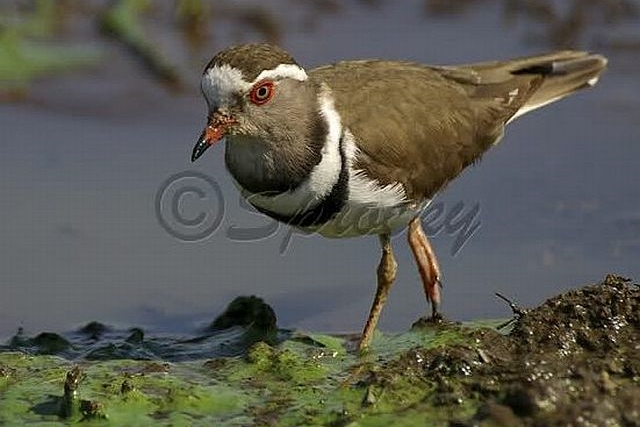
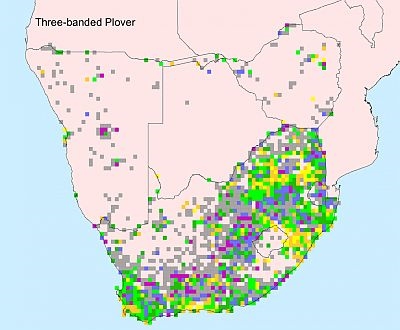
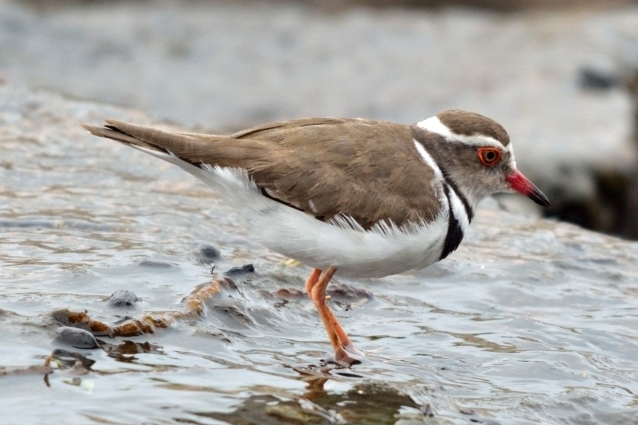 © BluTuna
© BluTuna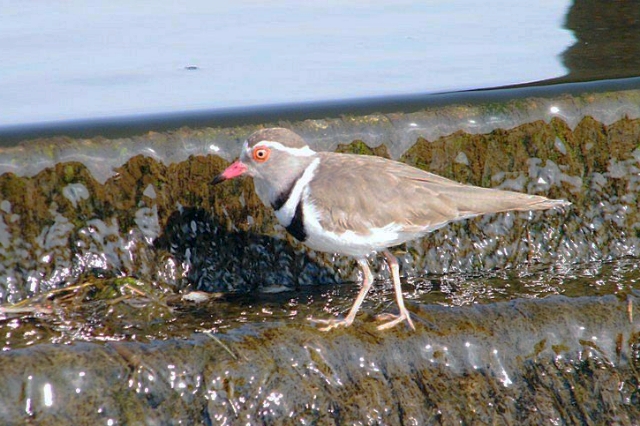 © Richprins
© Richprins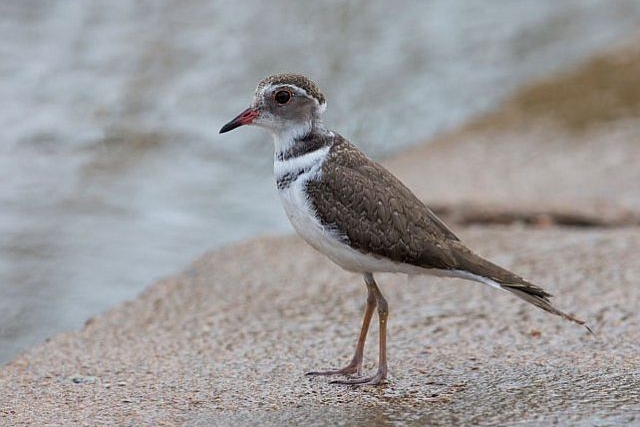 © Pumbaa
© Pumbaa  © steamtrainfan
© steamtrainfan

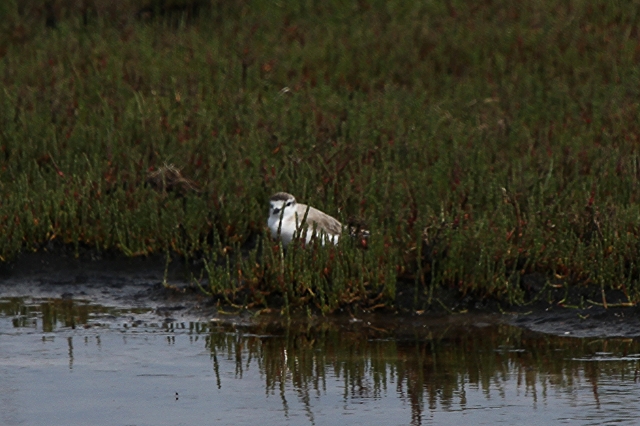 © Tina
© Tina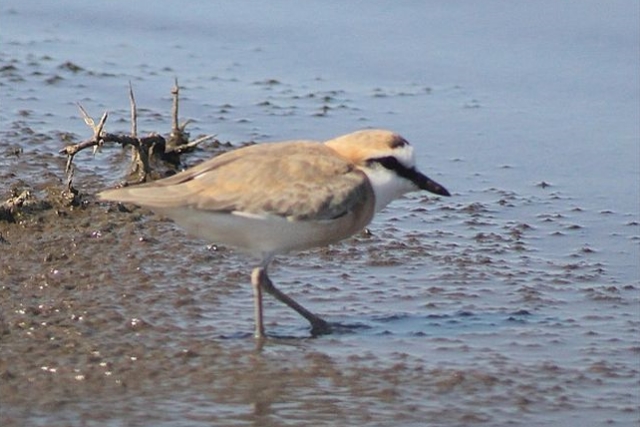 © Amoli
© Amoli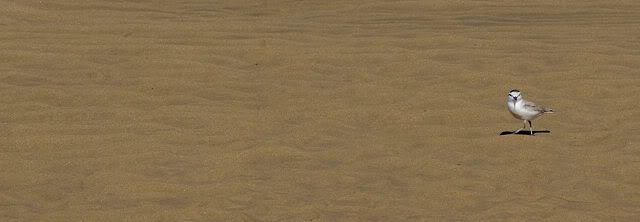 © Dewi
© Dewi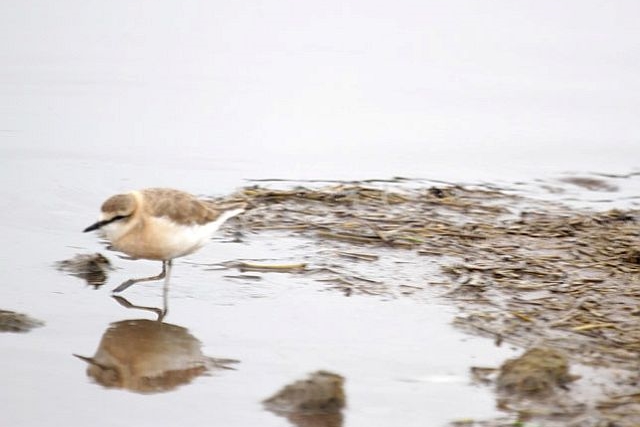 © leachy
© leachy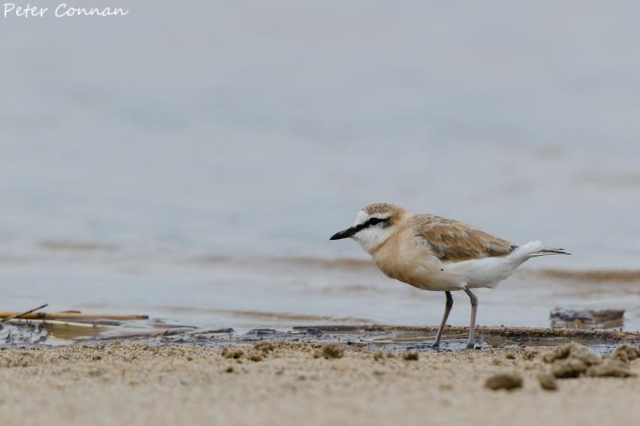 © Peter Connan
© Peter Connan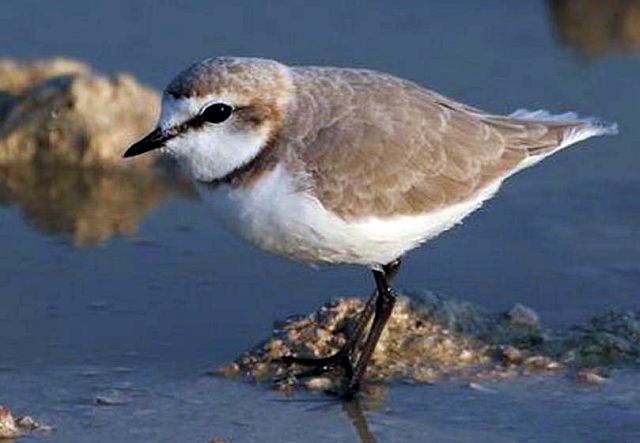
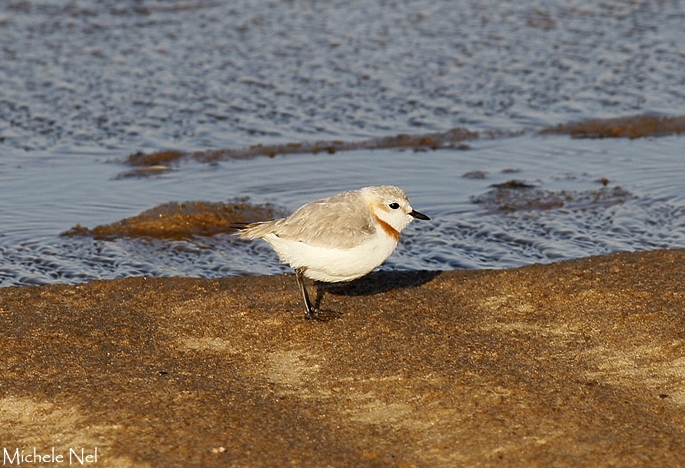 © Michele Nel
© Michele Nel